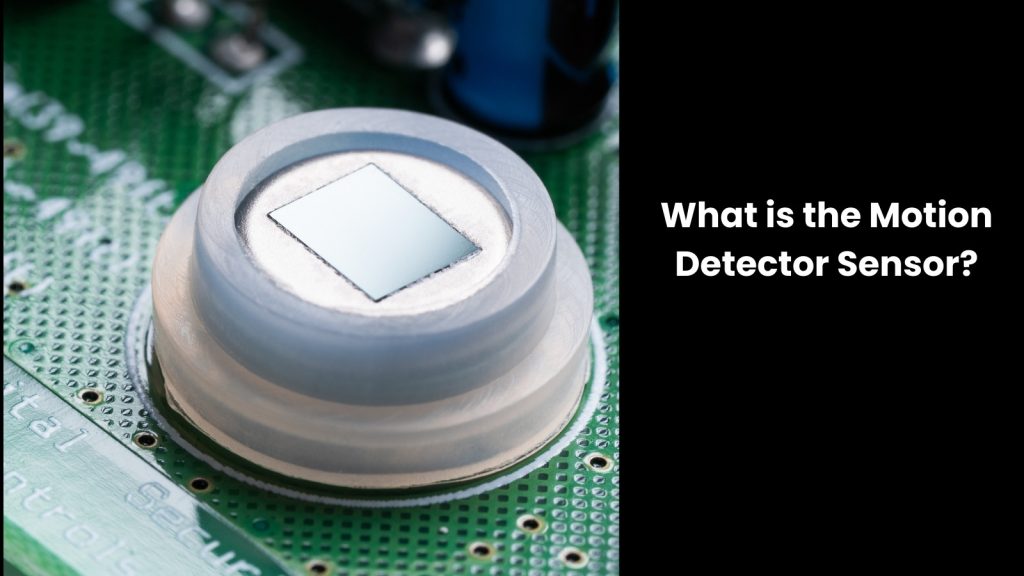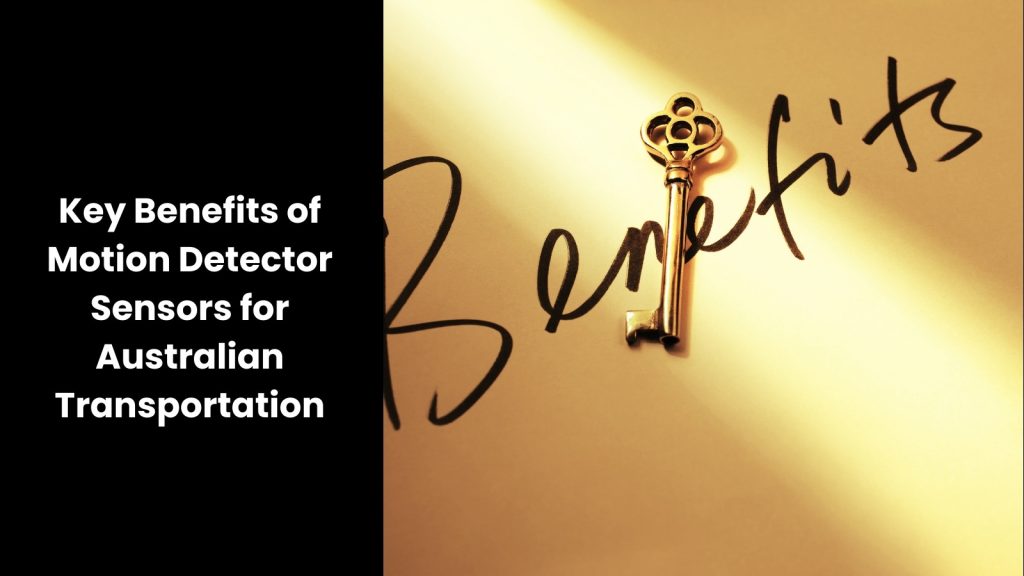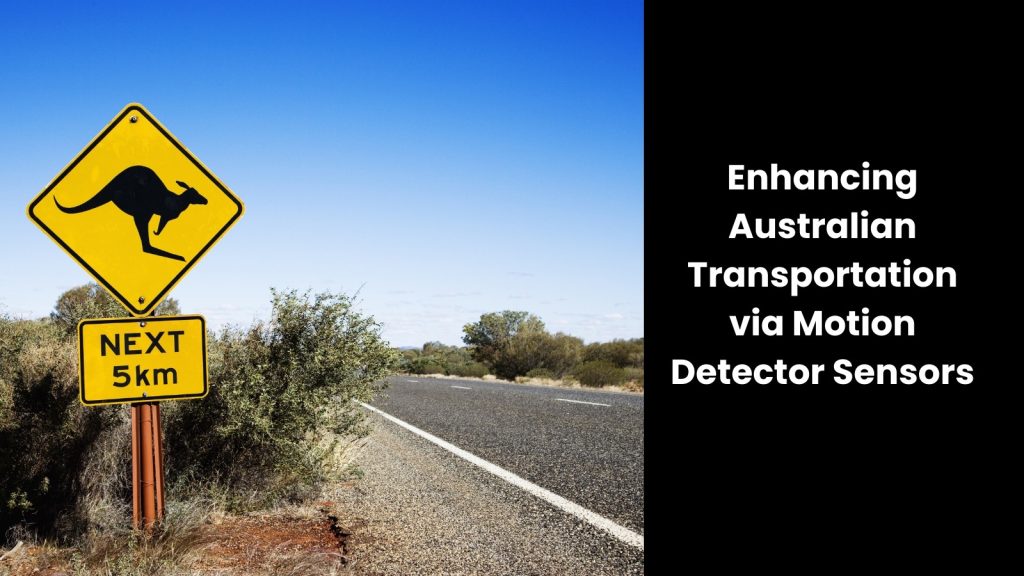It is evident that Australia’s transportation system is on the move, quite literally. But what if that movement could be even smoother, safer, and more efficient? This is where the Australian transportation authorities need cutting-edge technology like ‘Motion Detector Sensors’. From crowded city streets to remote outback railways, motion detectors are playing a huge role in creating a smarter, more responsive transportation network.
This blog article will cover everything about the top applications of motion detector sensors in Australian transportation.
What is the Motion Detector Sensor?

First, let’s give you a 360-degree view of the technology.
- Motion detector sensors are electronic devices that use technologies like infrared, ultrasonic, or microwave to detect movement within a designated area. They can analyse changes in infrared radiation, sound waves, or electromagnetic fields to trigger responses, such as activating alarms or adjusting lighting, based on detected motion.
- This indicates that Motion Detector Sensors can react to walking movements through this zone and the ambient light levels fall below within a chosen detection area. When someone walks through this zone and the ambient light levels fall below a certain point, the sensor turns the light on. After a set period, the light turns off again. This is the basic mechanism of the latter.
- These sensors work both indoors and outdoors to detect moving objects. They feature advanced evaluation software, high-quality optics developed in-house, durable electronics, and top-notch components.
- A motion sensor uses one or more technologies to detect movement. When it senses motion, it sends a signal to your security system’s control panel, which then alerts your monitoring centre. This system notifies you and the monitoring centre of a potential threat to your property.
- Motion detectors aim to sense intruders and send alerts to your control panel, which then contacts your monitoring centre. Sensors operate even when you are not monitoring or when you instruct the system that you are away.
- You can also programme some security systems to record events using a security camera whenever there is motion. These features make motion detectors reliable tools for enhancing safety and security in various environments.
Key Benefits of Motion Detector Sensors for Australian Transportation

Accuracy in Data Collection
These are highly beneficial to the Australian transportation industry, as they provide precise data on traffic patterns.
These sensors continuously monitor the movement of vehicles and pedestrians, capturing accurate information about traffic flow, speed, and congestion levels. When motion sensors detect movement, they collect data and transmit it to central traffic management systems.
This data helps authorities analyse traffic trends and identify problem areas, such as bottlenecks or high-accident zones. With this information, Australian urban planners and engineers can make informed decisions about where to build new roads, add traffic signals, or create pedestrian pathways.
The detailed traffic pattern data aids in optimising traffic light timings, reducing wait times, and improving overall traffic efficiency. Also, this information supports infrastructure development by highlighting areas needing maintenance or upgrades.
Likewise, by providing real-time and historical data, motion sensors help improve urban planning and infrastructure development, ensuring roads and transportation networks can handle current and future demands.
Traffic Flow Optimisation
.These sensors detect the movement of vehicles and relay this information to traffic management systems. As they continuously collect data on traffic volume, speed, and congestion, these sensors provide a comprehensive view of traffic patterns.
Then this is what occurs: Traffic management systems use this real-time data to adjust traffic signals, ensuring that green lights stay on longer during peak times and switch more frequently during low-traffic periods. This dynamic adjustment helps reduce congestion and keeps traffic flowing smoothly.
Not to mention that those motion sensors help identify and respond quickly to incidents like accidents or roadblocks. Since it is possible to detect sudden changes in traffic flow, such as a sudden stop or slowdown, the system can alert authorities to take action, such as dispatching emergency services or rerouting traffic. This quick response minimises traffic disruptions and improves overall traffic flow.
Enhanced Safety
Yes, these have the ability to detect obstacles and alert drivers, pedestrians, and cyclists to potential dangers. For example, when a sensor detects a pedestrian crossing the road or an object on the roadway, it can trigger warning signals or lights to alert drivers, helping them avoid collisions. This immediate response to potential hazards reduces the risk of accidents and enhances safety for everyone on the road.
In addition to improving road safety, motion detectors also play a crucial role in enhancing security in transportation hubs and parking areas. These sensors detect unusual movements, such as someone loitering or attempting to tamper with vehicles, and alert security personnel to these potential threats.
Through the possibility of monitoring these areas continuously, motion sensors help prevent vandalism and theft. The sensors can trigger alarms or activate surveillance cameras to record suspicious activities, providing valuable evidence for security teams.
Reduced Energy Consumption
Motion detection sensors help the Australian transportation industry reduce energy consumption. The question is how.
It has the capacity to enable adaptive street lighting, and these sensors detect the presence of vehicles, pedestrians, or cyclists and turn street lights on only when needed. When the sensors detect movement, they activate the lights, ensuring the area is well-lit for safety. Once the movement passes and the area is clear, the sensors turn the lights off, saving energy.
This adaptive lighting system significantly cuts down on energy usage and costs because the lights are not on all the time. Instead of having street lights run at full power throughout the night, the motion sensors ensure that lights are only on when necessary. This targeted lighting approach reduces the overall electricity consumption and lowers the expenses associated with energy usage.
In addition to saving energy, adaptive street lighting helps reduce light pollution, which benefits the environment. This means they keep the lights off when they are not needed. This way, the sensors help maintain darker night skies, which is beneficial for wildlife and improves the quality of life for residents.
Cost Efficiency
This occurs through its ability to minimise the need for manual monitoring and maintenance. These sensors automatically track traffic conditions, detect obstacles, and manage street lighting, which reduces the reliance on human oversight. Instead of having staff continuously monitor traffic, adjust street lights, or manage security, these tasks become automated.
If they can integrate motion detection sensors, transportation authorities in Australia can save on labour costs since they do not need as many personnel for routine checks and adjustments. What is more, sensors can detect issues early, such as malfunctioning street lights or traffic signals, and alert maintenance teams only when needed. This proactive approach prevents small issues from becoming major problems, reducing repair costs and downtime.
Moreover, the long-term savings extend beyond labour costs. This is where the Motion Sensors contribute to energy efficiency by ensuring that street lights are only on when necessary, as they respond to movement rather than operating continuously. This targeted use of energy results in lower electricity bills for the Australian transportation agencies, for sure.
Enhancing Australian Transportation via Motion Detector Sensors

As digitalisation evolves day by day, its applications spread across a wide range of fields, for sure. Technology is there to be utilised to get the maximum benefits from them, and it is certainly a wise decision to employ them in these types of scenarios to optimise every angle of a country. However, it is also necessary to check the reliability of the software provider when purchasing such a tool, as only a scalable product can offer the best benefits.







